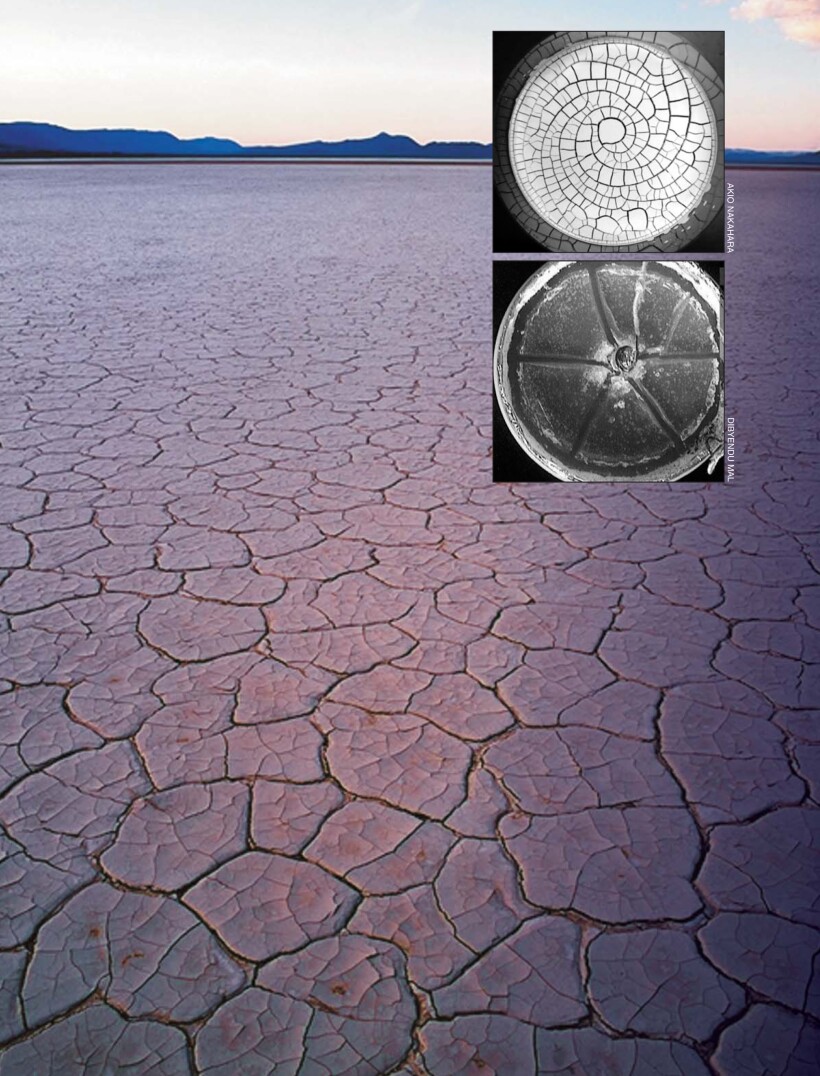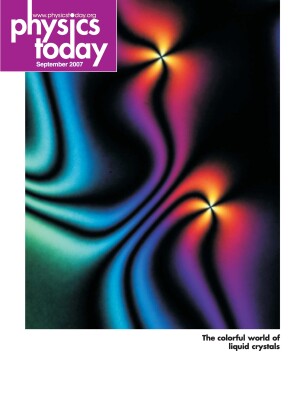Desiccation cracks
DOI: 10.1063/1.2784666
Crack patterns in layers of mud in dried riverbeds or in the glaze on old porcelain crockery are familiar to everyone. Desiccation crack patterns share some typical characteristics, which make them an active topic of research. Details such as the width distribution of cracks, the area they cover, the angles at which they meet, and the number of sides and the size distribution of the polygonal pieces depend on numerous factors, including the material, substrate, drying rate, humidity, and temperature. Realistic crack patterns can be generated by computer simulation using models that take into account the details of the physics and chemistry of the process. Numerous studies are under way to better understand the cracking process and, in some cases, how to control it, since crack patterns are sometimes intentionally produced as an artistic effect for decorative objects. Shown above are the spiral crack patterns produced when a clay sample is moved in a circular path before drying, and radial crack patterns formed when a synthetic clay is dried in a radially symmetric static electric field. More about desiccation crack patterns can be found in D. Mal et al., J. Phys. Soc. Jpn. 76 , 014801 (2007);
To submit candidate images for Back Scatter, visit http://www.physicstoday.org/backscatter.html

